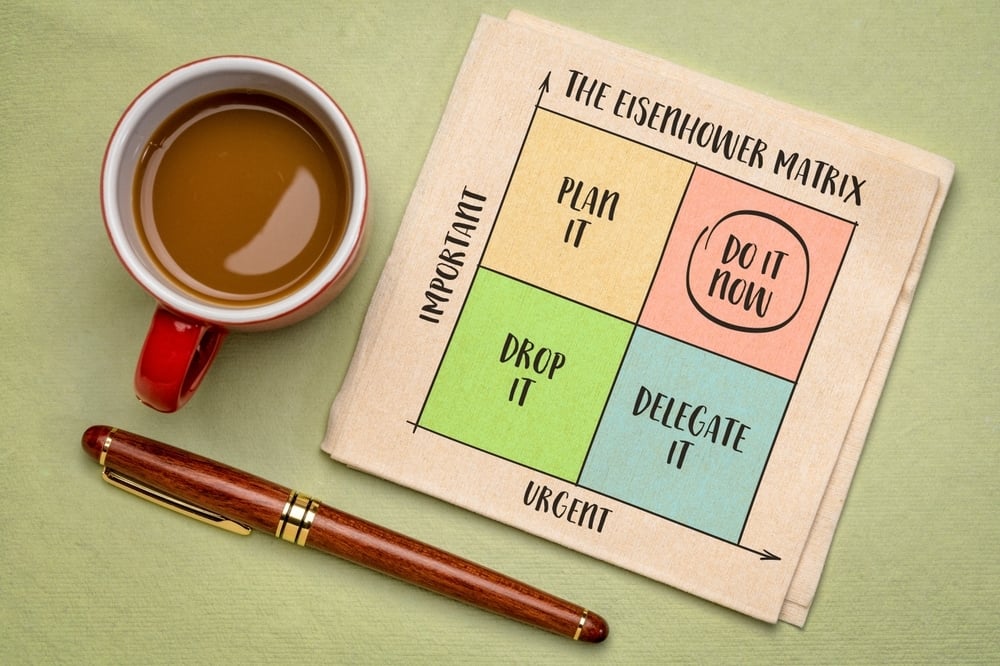
How to Handle Conflict in Your Business Before It Becomes a Problem
by Tara Covell
Listen to Audio Version:
Conflict is an inevitable part of running a business. Whether it’s between employees, customers, partners, or suppliers, disagreements will naturally arise when people work together toward ambitious goals. Left unaddressed, conflict can harm relationships, impede decision-making, and create a negative work environment.
However, conflict isn't necessarily bad. When handled well, it can strengthen teams, foster innovation, and lead to better outcomes for everyone involved.
In this article, we’ll explore why conflict happens in business, real-world examples of effective conflict resolution, practical strategies for handling disagreements, and how building a strong conflict culture can support your long-term success.
What Causes Conflict in Business?
Business conflict often stems from underlying differences — differences in goals, priorities, communication styles, or expectations. Some of the most common causes include:
-
Different goals or priorities: Departments may clash when objectives are misaligned, such as balancing cost-cutting with quality improvements.
-
Communication breakdowns: Misunderstandings or assumptions can quickly escalate minor disagreements into significant issues.
-
Role ambiguity: When employees are unclear about responsibilities, overlaps or gaps can cause frustration and tension.
-
Resource competition: Limited time, budgets, or people often spark disagreements over what should take priority.
-
Personality clashes: Individual working styles, values, or preferences can create friction if not managed carefully.
Recognising the root cause of a disagreement makes it much easier to find a resolution before serious damage occurs.
Examples of Conflict Resolution
To see conflict resolution in action, here are a few real-world business scenarios:
Employee Disputes
Scenario:
Two project team members have different ideas about how to deliver a key client project. One values a detailed, cautious approach; the other pushes for speed and innovation.
Resolution:
A manager facilitates a conversation, allowing both to explain their concerns. Together, they agree on a phased plan that delivers early wins while allowing for thorough quality checks over time.
Key takeaway:
Early mediation, open communication, and collaborative problem-solving can transform friction into more effective project outcomes.
Customer Conflicts
Scenario:
A loyal customer complains that a recent order arrived late and incomplete.
Resolution:
The business listens to the customer's concerns without defensiveness, apologises sincerely, replaces the order promptly, and offers a goodwill discount for future purchases.
Key takeaway:
Empathy, responsiveness, and a commitment to resolution can often transform an unhappy customer into a brand advocate.
Partner Disputes
Scenario:
Two business partners disagree over whether the business should expand internationally.
Resolution:
A neutral third party, such as a mentor or advisory board, facilitates structured discussions. They work through each partner’s concerns, clarify risks, and agree on a phased expansion plan with clear review points.
Key takeaway:
Bringing in an objective facilitator can move discussions from emotional deadlock to structured decision-making. (Read more about how to find a business partner and build successful partnerships.)
Vendor Conflicts
Scenario:
A supplier consistently misses agreed-upon delivery deadlines.
Resolution:
The business documents communication carefully, arranges a formal review, and renegotiates the service agreement, including new penalties for delays.
Key takeaway:
Professional, documented negotiation protects business interests without unnecessarily damaging supplier relationships.
How Do You Handle Conflict in a Business?
To handle conflict in a business, start by spotting early signs of tension and creating a safe environment for open discussion. Listen actively to all sides, focus on identifying the real issues, and work collaboratively toward practical solutions. By staying calm, seeking compromise, and clearly documenting agreements, business owners can resolve conflicts before they escalate and build stronger, more resilient teams.
Here’s a practical step-by-step guide:
-
Identify issues early: Don't ignore signs of tension; instead, address them promptly.
-
Create a safe environment: Ensure people feel able to raise concerns without fear of blame.
-
Listen actively and empathetically: Really listen — not just to words, but to emotions and intentions.
-
Clarify the real issues: Reach an agreement on what the actual problem is before attempting to solve it.
-
Focus on solutions, not blame: Aim to move forward rather than dwell on who’s at fault.
-
Be willing to compromise: Flexibility often leads to outcomes everyone can support.
-
Document agreements: Make resolutions clear to avoid future misunderstandings.
Businesses that address conflict early and constructively build cultures based on trust, resilience, and sustainable business growth strategies.
What Are the 5 C's of Conflict Resolution?
The "5 C's" provide a simple, memorable framework for approaching conflict:
-
Communication: Encourage open, honest conversations.
-
Compromise: Recognise that giving a little often leads to stronger outcomes.
-
Collaboration: Work together to find mutually beneficial solutions.
-
Consideration: Show respect for different viewpoints and experiences.
-
Consistency: Apply the same approach to conflict resolution across the business to build trust and fairness.
Keeping these five principles in mind can help de-escalate even challenging situations quickly and professionally. (You might also like our article on practical leadership skills for business growth.)
What Is an Example of a Person-Role Conflict in Business?
A person-role conflict arises when an individual’s personal values or priorities clash with the expectations of their job.
Example:
A manager who values work-life balance is pressured to require their team to work frequent overtime. While professionally obligated to deliver results, personally, they feel uncomfortable enforcing a culture of overwork.
Resolving it:
Open conversations with leadership about expectations and ethical concerns can lead to more sustainable solutions, for example, adjusting deadlines or redistributing workloads. Businesses that handle these conflicts sensitively often retain their most committed and values-driven employees.
Core Conflict Resolution Skills Every Business Owner Needs
Effective conflict resolution isn’t about avoiding disagreements — it’s about navigating them with skill. Business owners should develop:
-
Empathy: Understand and value different perspectives.
-
Active listening: Truly listen, rather than preparing your next response.
-
Negotiation: Find solutions that balance competing needs.
-
Emotional regulation: Stay calm even under pressure. (See our article on resilience and communication skills for more strategies.)
-
Assertiveness: Clearly communicate your needs while respecting the needs of others.
-
Adaptability: Know when to stand firm and when to compromise.
Building these skills doesn't just make conflict management more straightforward; it strengthens your leadership across every area of your business.
How TAB Helps Business Owners Navigate Conflict
As a business owner, dealing with conflict can be an isolating experience. High-stakes decisions often require advice, but who can you trust to be objective?
That’s where The Alternative Board can help. As part of a peer advisory board, you gain:
-
Unbiased advice from experienced business leaders who understand real-world challenges.
-
A confidential environment to explore difficult conversations before they escalate.
-
Practical support and accountability for developing your leadership skills.
Working through conflict is easier — and far less stressful — when you have trusted advisors to support you.
Final Words
Conflict in business is inevitable, but unmanaged conflict doesn’t have to be.
Handled well, disagreements can lead to stronger relationships, smarter decisions, and long-term success.
By recognising the early signs of conflict, developing strong resolution skills, and building a healthy company culture, you can not only protect your business but also help it thrive.
And if you're looking for fresh perspectives and real-world support in handling leadership challenges, TAB is here to help you move forward with clarity and confidence.
Related articles

Marginal Gains, Atomic Habits – and Nothing New
Ed explores the concepts of marginal gains and atomic habits, emphasising their relevance to business success.

How to Keep Motivated: Tips from Birmingham Members
Tips from our Birmingham members about how business owners can keep motivated in the midst of the pandemic.

The road not taken
Ed Reid, Managing Director of TAB (UK), discusses how business owners need to have an open mind to stay ahead of what is coming next.





